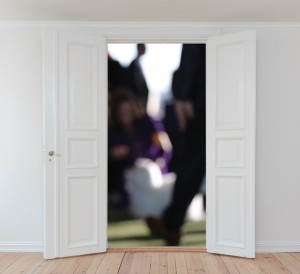Never Cut to a Closed Door
Click here to read the complete article
230 – August 2019
By Kat Smith
 Like many of you, I spend quite a bit of time on the road driving to one dog show or another. Living in southern New England, a “long drive” for me is an enviable three or four hours, but it’s still enough time that I am constantly buying audio books.
Like many of you, I spend quite a bit of time on the road driving to one dog show or another. Living in southern New England, a “long drive” for me is an enviable three or four hours, but it’s still enough time that I am constantly buying audio books.
The topics are broad, but over the past few months I’ve been listening to memoir after memoir (Michelle started it – thanks, Obama). On my trip the other weekend to the north shore of Boston, I landed on Tina Fey’s Bossypants.
When you have an open mind, you can find good dog show advice anywhere – including from Tina Fey talking about late night comedy.
Never cut to a closed door.
That’s right. This is absolutely sound dog show advice: never cut to a closed door.
She explains, “The director had cut [the camera] to a door a moment too soon, before the actor entered, and in that moment [the executive director] felt we had ‘lost the audience.’”
We’ve all been in this scenario. Our dog is perfectly stacked, perfectly baiting, waiting and waiting until the judge turns around, and then they bounce or sink or wiggle and panic ensues.
We won’t penalize dogs for being dogs, but more often than not this is handler error. People see the last dog get on the table so they set up their dog and wait. And wait. And wait. That’s great if your dog will stand at attention that long, or if you need some time to negotiate with them about staying still. But most of the time the end result is a dog who is sick of standing right as the judge turns around. And you’ve just had your audience cut to a closed door. Figure out how long your dog will stand, learn how to set up your dog quickly, and remember that it’s better if the judge sees the end of a stack than the beginning of a fight.
The other common ‘closed door’ handler error I often see is people not showing the judge what he or she is looking at. If the judge is coming down the line to look at expression, don’t turn around and futz with the back feet! If your judge is looking at heads, show the head. At profile, show profile. At rears, show rear. Fix the other stuff after. Don’t cut to a closed door.
Still unclear what I mean here? I went to a George Alston seminar long ago, and a similar piece of wisdom really stuck with me: Never let the judge see your dog looking ugly.
Tina Fey also said, “Comedy is about confidence, and if people in the audience sense a slip in confidence they’re nervous for you and they can’t laugh.”
This isn’t about that awful stare-down of judges; relaxed, confident body language will do. If you’re huddled over like you’re so sorry to be taking up their time, it can make a judge wonder what you’re apologizing for – and they often assume it’s the dog.
“But they should judge dogs!” you cry, but I will tell you that the human brain is hard-wired to subconsciously consider these physical cues. If they are standing in front of a breed they have mastery of, their own confidence will carry them over it. But – that is not always the case.
Set your dog up in front of the mirror and then see how you look. You don’t have to smile (as a millenial woman, I will absolutely never tell anyone they need to smile). But you can make sure your posture is good, your arms are strong, your shoulders aren’t caving in, and you don’t look terrified or apologetic.
Be confident. Never cut to a closed door. And never underestimate who can teach you a thing or two about showing your dog.
230 – August 2019
Short URL: http://caninechronicle.com/?p=168070
Comments are closed











